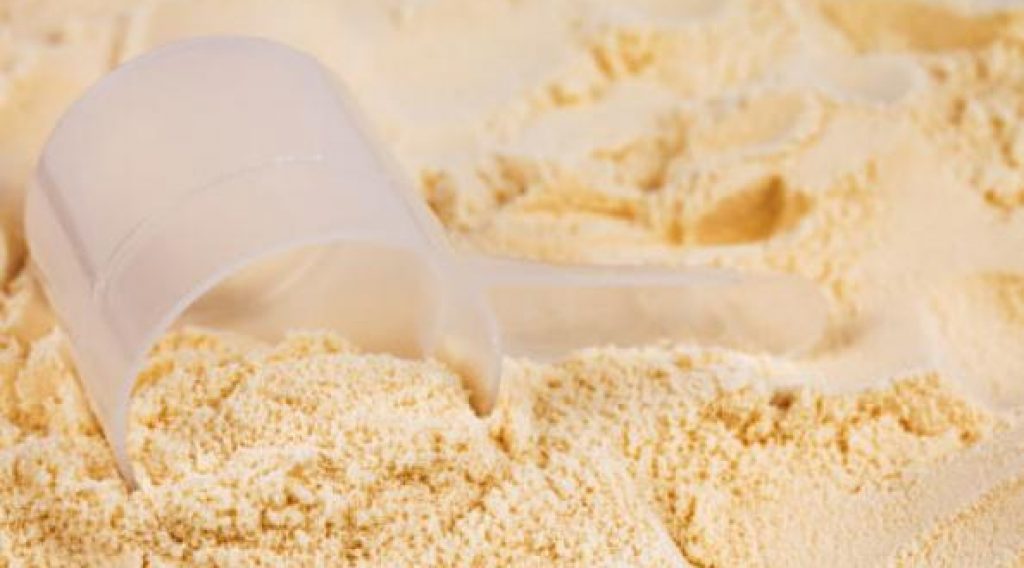Growing concern over pollution, environmental control and recycling lead to investigations of whey possible usage. A history upon whey is that in cheese production for each vat of milk almost 90% of the volume is left unused, called whey and only cheese curds are further used for cheese manufacture. Whey is treat as a disposal waste either fed to animals or dumped in to lakes. However, as technologies and innovations are stepping forward whey has been discovered as valuable and useful product.
Whey retains more than 45-55% of milk nutrients like serum protein, lactose, minerals and vitamins. Moreover, whey proteins (WP) contains all of the essential amino acid, more specifically BCAA. BCAA are extremely valuable as these amino acids are metabolized directly into muscle tissue. Regarding functional properties, dried WP is appropriate for beverages formulation since it is fresh, has neutral taste and is soluble over a wide range of pH.
The vision is to combine novel ideas of whey WP applications and technological challenges to create a beverage with it representing trendy „Healthiness-on-the-go“ products.
As WP processing and application processes to beverages are relatively novel in EU, Scandinavia is leading one. Norwegian company TINE together with the experts’ team from Arla Functional ingredient managed to apply science to reality. Arla cooperated with two dairy giants Nordmilch and Humana creating new company ArNoCo since 2010. Over 700.000 tons of whey each year is transformed into whey protein concentrate (WPC). More cooperations with dairies from Argentina, Germany, France, Norway and Sweden appeared from 2011 and market is exponentially growing each across the EU.
The two challenges that appear are first WP processing technology and subsequently its application into beverages. Let`s briefly look at both.
 The Science of Whey Protein Processing
The Science of Whey Protein Processing
First, water from the liquid (whey) left after cutting coagulated milk is removed. Cut curds are further proceed to manufacture cheese. First step to proceed with whey is typically separation of proteins from lactose and mineral salts using membrane ultra filtration technique. Former is dried to get WPC or may be separated to individual protein streams (e.g. α-lactalbumin, β-lactoglobulin that can be used for infant formulas).
Challenges and Opportunities in Whey Protein Processing
Major challenge in WP containing beverages is protein denaturation and aggregation during thermal processing leading to white clumps and turbidity in beverages. (Laclair & Etzel, 2010) investigated by combining various technological parameters diminishes latter issues:
- Mix of ingredients and rehydration. By using an adequate hydration time of WP of 20 minutes before heat treatment turbidity of solution is reduced by 50%. Agitation is necessary until complete dissolution;
- pH modification. Alteration of pH in the range of 3.0-3.8 showed WP beverage to maintain clear after heat treatment. Moreover, pH has an effect on astringency. Thus, a mixture of different acidulants such as phosphoric, citric and malic acid is often used when formulating these products to balance the flavor profile and reduce tartness;
- Emulsifiers, e.g. phospholipids (lecithins) protects WP when exposure to heat treatment and increases viscosity.
These are only a few examples of the complicated process behind.
According to Euromonitor figures worldwide sales of sports related protein products grew from £2.5bn in 2007 to £4.9bn in 2012 and are likely to reach £7.8bn in 2017. This indicates that market for protein containing drinks is expanding and that there is still room left for protein drinks manufactured with utilized whey. Good news, isn`t it?
On the other hand, the question raises whether protein trend will not fall as customers are getting more educated. According to FDA recommended protein intake is 50 grams on 2000 calories diet. The number may be seen high at first without taking into account that our diet all consists of protein source at some level (vegetables, meat, grains, eggs, etc.). Center of Disease, Control and Prevention warns about the possible side effects on stress of kidneys, dehydration if overtaking recommended dosages of proteins. Golden mean is a must.
Let`s see whether growing processed hill of whey protein concentrate powders will successfully find its way to new formulations of protein containing beverages.
Reference:
Laclair, C.E., & Etzel, M.R. (2010). Ingredients and pH are Key to Clear Beverages that Contain Whey Protein. Journal of Food Science, Vol.75.
